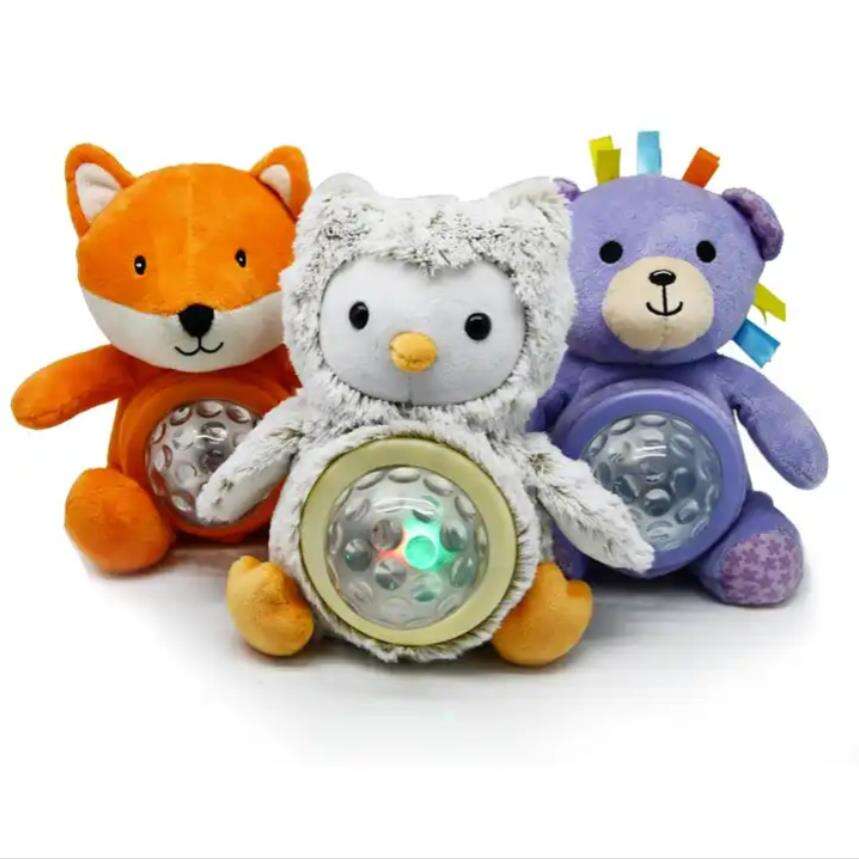How to Select Educational Toys That Support Cognitive Growth
Key Considerations for Choosing Educational Toys
Safety Standards and Age Appropriateness
Ensuring the safety of educational toys is paramount, and adherence to recognized safety standards like ASTM and EN71 is crucial. These standards ensure that toys are free of toxic materials and hazards that could harm children. Selecting toys that adhere to these standards is an essential step in safeguarding your child's playtime environment. Additionally, age-appropriate toys are vital in preventing choking hazards and ensuring the toy's complexity matches the child's developmental stage. By choosing products suitable for the child's age group, you cultivate a conducive learning environment, promoting safe exploration and optimal learning experiences.
Alignment with Developmental Milestones
Educational toys should align with children's developmental milestones to support cognitive, social, and emotional growth at various stages. For instance, toys designed for toddlers can enhance cognitive abilities by encouraging problem-solving and decision-making tasks, fostering intellectual growth in a safe, fun manner. Experts emphasize selecting toys that engage children in age-appropriate activities, allowing them to develop necessary skills. Incorporating toys that support cognitive and emotional development can significantly enhance a child's learning journey.
Encouraging Problem-Solving Skills
Educational toys play a vital role in fostering problem-solving skills and enhancing critical thinking in children. Toys like puzzles and building blocks challenge young minds, encouraging them to find solutions to complex scenarios. These toys are designed for various age groups, providing cognitive challenges that stimulate mental development. By integrating toys that focus on problem-solving and critical thinking, parents can help children build confidence and resilience through playful exploration.
Incorporating Sensory and Motor Skill Development
Toys that engage multiple senses contribute significantly to both sensory processing and motor skill development. These toys, like shape sorters or sensory boards, are perfect for improving children's tactile experiences, as they promote hand-eye coordination and enhance motor skills essential for their growth. Sensory toys provide children with the opportunity to explore textures, sounds, and movements, facilitating comprehensive sensory development. Studies show that engaging multiple senses during playtime enhances children's ability to process and respond to sensory information efficiently, making it a crucial aspect of their developmental process.
How Educational Toys Foster Cognitive Growth
Stimulating Critical Thinking Through Play
Educational toys play a pivotal role in enhancing critical thinking skills by engaging children in activities that require logical reasoning and problem-solving. Through interactive play, children learn to analyze situations, make decisions, and solve problems independently. For instance, according to a study, children who regularly engage with educational toys that involve strategic thinking show a significant improvement in cognitive functions such as logic and reasoning. These toys often incorporate puzzles or scenarios that challenge the mind, thus promoting critical thinking.
Enhancing Memory and Focus with Interactive Design
Certain interactive toys are specifically designed to enhance memory retention and focus in children. These toys utilize engaging designs to capture a child's attention and challenge their memory through repetitive actions and recall exercises. Studies have shown a correlation between interactive play and improved cognitive capabilities, indicating that children tend to retain information better when actively interacting with the toy elements. By focusing on keeping tasks varied yet structured, these toys help improve children's focus and strengthen their ability to maintain attention over prolonged periods.
Building Creativity and Imagination
Creative play is fundamental in fostering imaginative thinking and innovation among children. Toys that encourage children to explore different scenarios and storytelling promote an environment where creativity can flourish. For example, a pretend toy set can introduce 150 songs and sounds, creating endless scenarios for a child to explore, thereby enhancing their creative and imaginative skills. Educational toys, such as the Fisher-Price Laugh & Learn Sit & Steer Driver Activity Center, stimulate creativity by allowing children to mimic real-life activities, thus nurturing their innovative instincts and expanding their ability to visualize and create.
Age-Appropriate Educational Toys for Different Stages
Infants (0-12 Months): Sensory Exploration
During the first year, infants thrive on sensory exploration, which is crucial for their cognitive and emotional development. Toys such as rattles and soft blocks offer varied textures, colors, and sounds that are key to stimulating infants' senses and can be vital tools in this exploratory learning phase. As Dr. Mark Coster, founder and chief editor of STEM Geek, points out, infants are at a stage where they engage with the world through diverse sensory experiences (source not specified). Sensory engagement at this stage lays a foundation for future cognitive processes, supporting the development of more complex functions like attention and memory.
Toddlers (1-3 Years): Motor Skill Development
In the toddler years, motor skill development becomes a focal point of physical and mental growth. Toys that encourage physical activity, such as stacking toys and push-pull toys, are excellent tools to enhance both fine and gross motor skills. According to insights from child development experts, mastering these motor skills during this critical evolutionary phase aids in building better coordination and physical strength. As toddlers interact with these toys, each movement and interaction helps them understand spatial awareness and improve their balance, which is crucial as they learn to walk, run, and explore their environment.
Preschoolers (3-5 Years): Problem-Solving Challenges
Preschoolers benefit greatly from toys that introduce them to problem-solving tasks, fostering independence and critical thinking. Puzzles and educational games engage children in complex, thought-provoking scenarios that challenge their developing brains. These activities are not only fundamental in honing problem-solving skills but also in promoting independence. Educational toys like puzzle sets demand strategic thinking and perseverance, empowering preschoolers to tackle challenges independently, which boosts their confidence and resilience. Encouraging this autonomy through play helps lay a strong foundation for future learning experiences.
Featured Educational Toys for Cognitive Growth
Luxuriously Customizable Baby Security Blanket & Plush Toy Set: Sensory Comfort and Security
Luxuriously Customizable Baby Security Blanket & Plush Toy Set offers remarkable sensory benefits for infants and young children. This tailored set combines a plush toy with an ultra-soft blanket, engineered to provide sensory comfort that is essential in early emotional development. Comfort objects like these are crucial in promoting a child's emotional security, serving as soothing companions during moments of distress and aiding in the development of a secure attachment.
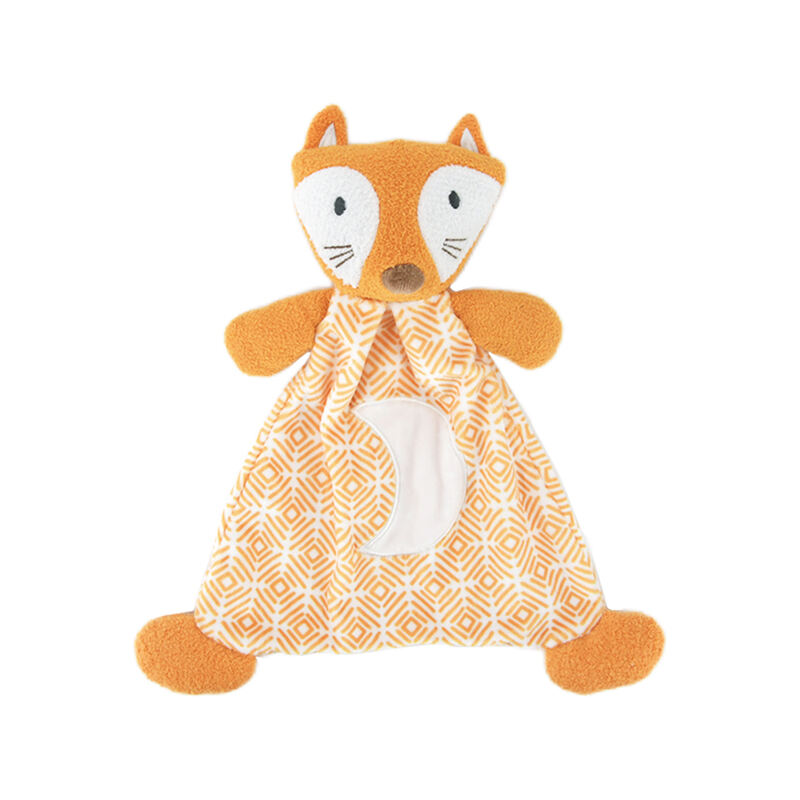
For more details about this product, visit the Luxuriously Customizable Baby Security Blanket & Plush Toy Set.
Personalized Cartoon Animal Backpack with Unique Owl Motif: Ergonomic Learning Companion
The Personalized Cartoon Animal Backpack with Unique Owl Motif provides ergonomic benefits tailored for young learners. By offering personalized designs, this backpack increases a child's enthusiasm for learning while fostering a sense of ownership. Additionally, children can enhance their organizational skills as they take responsibility for packing their belongings, setting a foundation for both academic and personal growth.
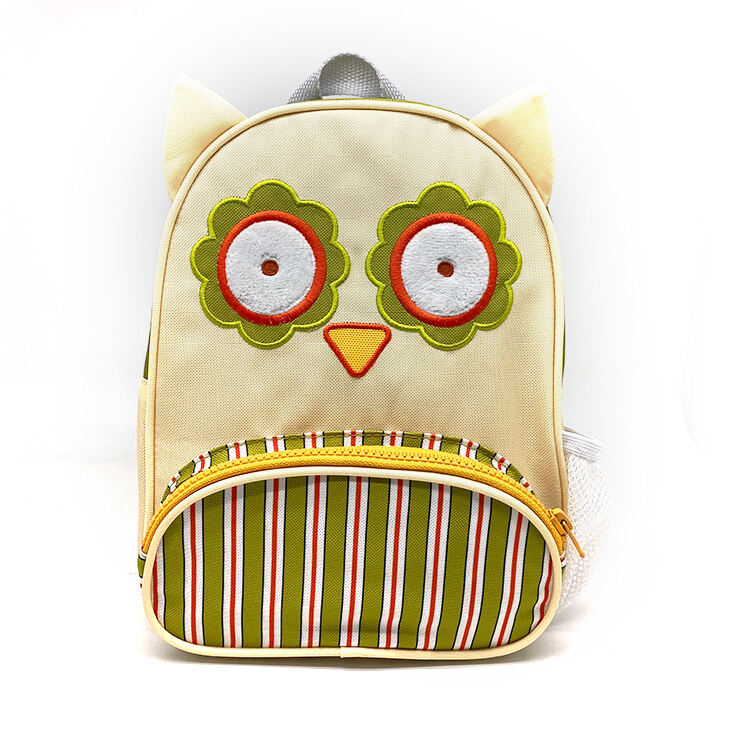
Learn more about this product at the Personalized Cartoon Animal Backpack with Unique Owl Motif.
Bunny Security Blanket: Tactile Skill Development
The Bunny Security Blanket is designed to engage children tactically, fostering the enhancement of fine motor skills. This plush toy encourages touching, squeezing, and handling, which are activities that help develop finger dexterity and tactile responses. Comfort items such as this not only offer tactile engagement but also provide the emotional security essential in the well-being of young children.
.jpg)
For further information, explore the Bunny Security Blanket.
Animal Tail Cloth Book: Textured Learning Experience
Textured books like the Animal Tail Cloth Book offer rich sensory experiences which are instrumental in early literacy. These books effectively merge texture and fabric materials to foster sensory engagement, which in turn aids cognitive growth and reading readiness. Research highlights that interactive elements in books can significantly enhance a child's curiosity and cognitive development during early childhood.
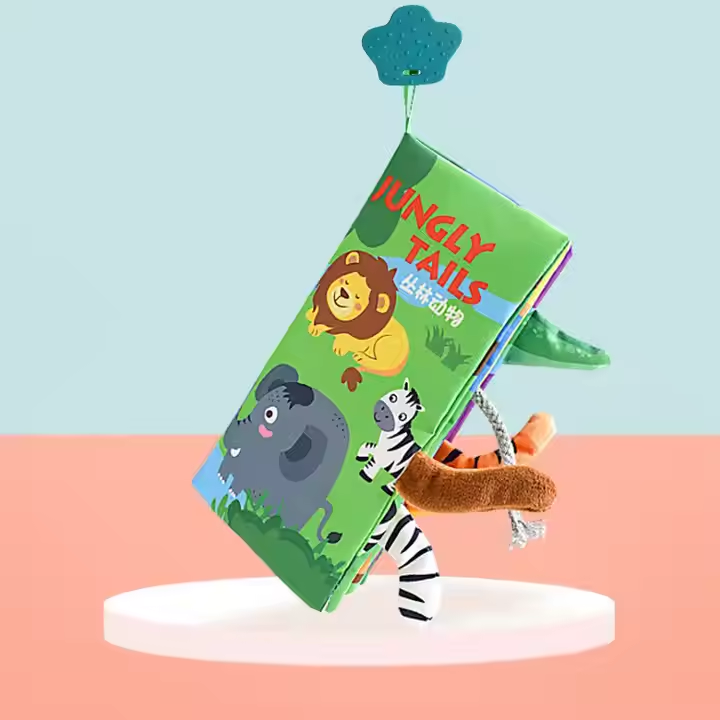
Discover more about this intriguing book at the Animal Tail Cloth Book.
Baby Deer Cotton Pillow: Safe Sleep and Play Integration
The Baby Deer Cotton Pillow is designed with safety in mind, integrating playtime features while promoting healthy sleep habits. This pillow ensures comfort and safety through its child-friendly materials, facilitating both rest and play. By creating a secure environment, the pillow acts as both a sleep aid and a play companion, crucial for establishing consistent sleep routines and supporting cognitive development through resting periods.
.png)
For more information on this product, check out the Baby Deer Cotton Pillow.
Safety and Material Quality in Educational Toys
Non-Toxic Materials for Sensory Exploration
When it comes to educational toys for children, the use of non-toxic materials is paramount. These materials ensure that children can safely explore their environments through touch, taste, and interaction, which is crucial during sensory development phases. To guarantee safety, educational toys often conform to strict regulations, such as the U.S. ASTM F963 and the European EN71, which ensure that products are free from harmful chemicals like phthalates and lead. Safety certifications act as a reassurance to parents that toys are safe for their children. For example, toys labeled as "BPA-free" or "PVC-free" signal that they do not contain potentially harmful substances, allowing children to engage in sensory exploration without health risks.
Durability for Long-Term Cognitive Engagement
The durability of educational toys plays a critical role in sustaining long-term engagement and learning. Toys made from high-quality materials are built to withstand the rough handling typical of children's play, ensuring that they can be used repeatedly over time. Durable toys not only withstand wear and tear but maintain their safety standards, preventing the risk of breakage into small parts that could become choking hazards. Evidence from child development specialists suggests that robust toys encourage prolonged cognitive engagement, as children can explore and learn at their own pace. The high-quality construction ensures that educational toys remain reliable tools to support continuous cognitive growth and development.
Balancing Technology and Traditional Play
Role of Sensor Lab-Inspired STEM Toys
The rise of STEM-based educational toys is transforming learning by merging technology with education, offering significant advantages in cognitive development. Such toys, inspired by educational sensor lab equipments, engage young minds to explore scientific concepts interactively. Incorporating sensors, robotics, and programming, these toys enable kids to experiment and learn through real-time feedback, fostering problem-solving skills and creative thinking. Educational professionals emphasize that these STEM toys are not just about gadgetry but unlocking potential. Dr. Mark Coster of STEM Geek notes, "While it’s still early for problem-solving and logic, it’s time for varied sensory experiences through sounds, colors, and textures." The appeal of STEM toys lies in their ability to provide hands-on learning opportunities that traditional educational models may lack.
Benefits of Hands-On Manipulative Toys
Hands-on manipulative toys play a crucial role in children’s cognitive and motor skill development. These toys encourage tactile play, which is essential for young brains to process sensory information, develop hand-eye coordination, and improve fine motor skills. Research underscores the advantages of physical play in a digital age, revealing that children engaged in tactile activities learn more effectively than those involved in passive screen time. Manipulative toys like stacking rings and block sets provide opportunities for open-ended play, stimulating creativity and problem-solving abilities. Just as educational sensor lab equipments highlight experiential learning, these toys enable children to grasp concepts of form, texture, and spatial relationships, laying the foundation for more complex thinking processes.
Maximizing Long-Term Educational Value
Toys That Grow with Your Child
Selecting toys that adapt as a child grows not only ensures prolonged interest but also nurtures ongoing educational development. These versatile tools are designed to evolve with your child's cognitive and motor skills, offering sustained engagement throughout early childhood. By investing in such toys, parents can encourage continuous learning and curiosity as children discover new ways to play and learn with the same toy. This adaptability introduces a dynamic learning environment at home, capitalizing on each developmental stage. Thus, selecting toys that "grow" with the child can significantly enhance the longevity and educational value of playtime.
Multi-Stage Learning Opportunities
Some toys are expertly crafted to provide multi-stage learning experiences, accommodating various age groups and skill levels. Multi-stage toys, such as puzzles and shape sorters, exemplify this approach by offering challenges that grow in complexity alongside the child. For instance, simple puzzles can graduate to intricate ones as the child's problem-solving ability matures, fostering continuous cognitive development. Similarly, shape sorters introduce basic geometry concepts, progressing from simple to more complex spatial tasks. These toys are invaluable in promoting incremental learning, ensuring consistent educational opportunities as the child grows.
Recommended Products
Hot News
-
Selecting the Right Educational Toys for Different Age Groups
2024-11-08
-
Materials Used in the Production of Stuffed Animals
2024-11-04
-
Chinese Plush Toy Factories Lead the Global Market with Innovation and Quality
2024-01-23
-
How Plush Toys Can Boost Your Mental Health and Well-Being
2024-01-23
-
Plush Toys Factory Industry Trends: A Growing Market with Challenges and Opportunities
2024-01-23
-
Plush Toys Market Demand on the Rise
2024-01-23
-
Woodfield Website Online
2024-01-22
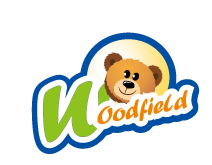
 EN
EN
 AR
AR
 BG
BG
 HR
HR
 DA
DA
 NL
NL
 FI
FI
 FR
FR
 DE
DE
 EL
EL
 IT
IT
 JA
JA
 KO
KO
 NO
NO
 PT
PT
 RO
RO
 RU
RU
 ES
ES
 SV
SV
 TL
TL
 IW
IW
 ID
ID
 SR
SR
 UK
UK
 HU
HU
 MT
MT
 TH
TH
 TR
TR
 FA
FA
 MS
MS
 GA
GA
 IS
IS
 EU
EU
 BN
BN
 LO
LO
 LA
LA
 SO
SO
 KK
KK

